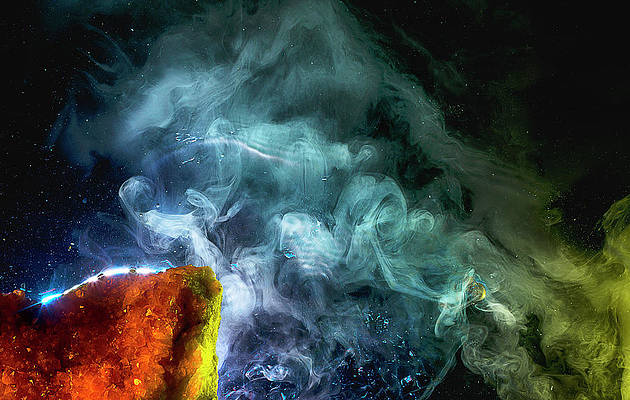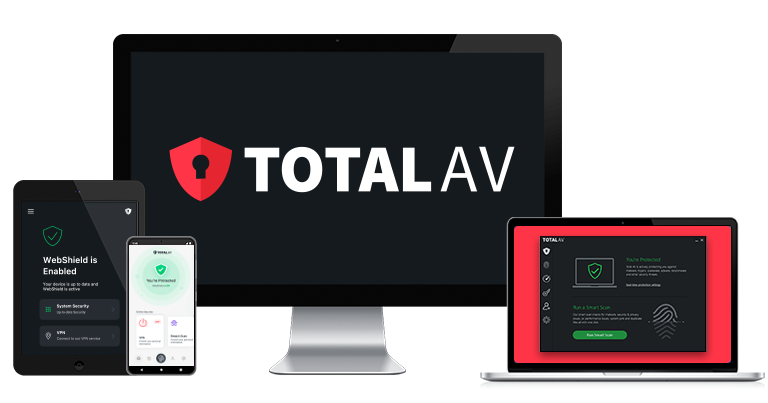
Tyler Cross
Updated on: January 4, 2024
Short on time? Here’s how to remove the Microsoft Pornographic Virus Alert:
- Step 1. Scan Device. Run a full system scan with a high-quality antivirus (Norton is the best).
- Step 2. Remove Virus. After the scan is complete, let the antivirus remove all instances of the Microsoft Pornographic Virus Alert malware.
- Step 3. Stay Protected. Protect yourself from further infections with a top-rated internet security package like Norton.
The Microsoft Pornographic Virus Alert is a scam — it often appears as a pop-up window or notification warning you that your computer is at risk from a virus and urging you to remove the virus. It then tries to trick you into downloading malicious software or calling a scam number.
Having the Microsoft Pornographic Virus Alert on your device can cause problems — it can damage your computer, display annoying ads, or even steal your personal info. It’s vital you never click on any links, call any numbers, or download any software that appears on the pop-up.
The good news is that removing the Microsoft Pornographic Virus Alert is easy — and the best way to do this is with a premium antivirus. Norton is a good choice as it has perfect malware detection rates and a range of useful extra features like a VPN and dark web monitoring to help you stay safe online. Once you have an antivirus like Norton installed, follow these steps to remove the Microsoft Pornographic Virus Alert.
Step 1. Identify the Potentially Unwanted Program (PUP) With Your Antivirus (And Don’t Make the Problem Worse!)
Note: avoid connecting USB drives, tablets, or phones to the infected device, as this could lead to the virus multiplying onto those devices too.
To fully eliminate the Microsoft Pornographic Virus Alert, download a reliable antivirus program like Norton and run a full disk scan. Even if you believe you know the source of the infection or have identified a suspicious .exe file, performing a full disk scan is the most effective solution.
By running a full disk scan, you’ll detect, quarantine, and eliminate every instance of the virus and other forms of malware, including rootkits, spyware, and worms. It’s important to allow the full system scan to complete without interruption even if the virus appears on the infected file list, because it’s impossible to know whether there are more versions of the virus lurking on your system.
The full scan can take up to 4 hours, but you need to be patient — the antivirus needs to scan every file and process on your computer. Luckily, top antiviruses usually scan your computer quite quickly. For example, Norton finished the full scan on my device in about 40 minutes.
Upon completing the scan, your antivirus will alert you to any identified malware and quarantine it, including the Microsoft Pornographic Virus Alert. Once this is done, you can proceed to the next step.
Step 2. Remove the Microsoft Pornographic Virus Alert Infection and Delete Any Other Infected Files
Your antivirus will give you the option to delete quarantined files. While more experienced users may want to examine the files and check for false positives before doing so, most users should trust their antivirus program. If a program like Norton or Bitdefender has flagged a file as malicious, it’s probably something you should remove from your computer.
Once you have removed all the infected files, it’s a good idea to restart your computer. After restarting, run a second full disk scan to confirm that your antivirus software has successfully eliminated all traces of the infection.
The second scan may take less time than the first since many antivirus programs (including Norton) remember which files have already been scanned and can therefore analyze your disk more efficiently.
Allow the second scan to finish. After you’ve reviewed and deleted every malicious file, you can rest assured that your device is now malware-free. However, keep in mind that while you’ve removed the Microsoft Pornographic Virus Alert, there are still countless other malware threats out there that can infect your devices, compromise your online accounts, and spread through your Wi-Fi network. That’s why it’s important to follow the third step as well.
Step 3. Keep Your Device Safe From Future PUPs
Unfortunately; there are many ways for malware to infiltrate your computer. With cybercrime rising every year, it’s more important than ever to ensure you’re protecting yourself through good online habits (like keeping varied and complex passwords and avoiding suspicious websites). It’s also important that you equip yourself with the right cybersecurity tools.
Here’s how to protect your device in 2024:
- Keep Your Software, OS, and Drivers Up-to-Date: Hackers tend to exploit vulnerabilities in new software releases, making it crucial for developers to patch them with updates. By enabling automatic updates whenever possible and consistently checking for new versions of your software, OS, and drivers, you can proactively minimize potential risks and ensure your devices run smoothly.
- Don’t Download Suspicious Files: Never download programs that you don’t recognize or click on suspicious links. Hackers hide malicious code inside seemingly benign files that can infect your computer immediately. In the case of the Microsoft Pornographic Virus Alert, if you click on the pop-up, you’ll risk downloading another malicious program. Antiviruses like Norton can detect and remove malware from suspicious downloads, and their real-time protection can prevent you from downloading anything risky in the first place. They can also alert you to risky websites in search engine results.
- Secure Your Wireless Network and IoT Devices: If your Wi-Fi network isn’t password-protected, it’s extremely vulnerable to hackers. You should set up a strong password using a reliable password manager like 1Password. Also, confirm that your Wi-Fi network is secure by looking to see if it has a lock symbol next to it in your computer’s settings. Follow the same steps for your Internet of Things (IoT) devices by checking their manuals or using online guides to learn how to secure them. When using public networks (like in a coffee shop), always use a VPN like ExpressVPN to protect your data from trackers.
- Download a Secure Antivirus Program: Finally, a good antivirus suite is essential for protecting yourself online. Software like Norton and Bitdefender can detect and remove any viruses from your device — plus these products provide extra benefits like packaged VPNs, smart firewalls, dark web monitoring, parental controls, and more.
Best Antiviruses for Removing the Microsoft Pornographic Virus Alert
Quick summary of the best antiviruses for removing the Microsoft Pornographic Virus Alert:
- 🥇 1. Norton — Best overall antivirus for removing the Microsoft Pornographic Virus Alert.
- 🥈 2. Bitdefender — Cloud-based scanner removes 100% of malware (including PUPs).
- 🥉 3. TotalAV — Reliable antivirus with a great free plan.
🥇1. Norton — Best Overall Antivirus for Removing the Microsoft Pornographic Virus Alert
Norton is the best antivirus I’ve tested. It combines an extensive malware database with advanced heuristics and machine learning to detect and remove 100% of malware threats.
I tested it out with 1,000 malware samples, including several versions of the Microsoft Pornographic Virus Alert, and it found and removed every single one of them. The real-time malware protection is just as good; after turning it on, it prevented 100% of malicious files from infecting my device.
Norton comes with great extra features, including:
- Dark web monitoring.
- VPN (virtual private network).
- Password manager.
- Parental controls.
- Cloud storage.
- And much more…
Norton’s dark web monitoring is excellent. Often, PUPs will attempt to phish for your personal information, so depending on exactly what you’ve downloaded, your info may have already been leaked onto the dark web. Norton’s dark web monitoring scans the entire dark web for details like your credit card and insurance info, phone numbers, email addresses, gamer tags, and more. If it finds your information, it provides in-depth instructions on what you need to do to ensure your online safety.
I also really like Norton’s secure VPN. There’s no data cap on any of the plans that come with the VPN (even Norton’s top competitor, Bitdefender, limits your data usage to 200 MB per day on its cheaper plans), and it protects your data in layers of unbreakable encryption. It’s also very fast — not far behind the best standalone VPNs — and has 2,000+ servers in more than 30 countries.
Norton also has the best-value plans on the market. The starter plan, Norton AntiVirus Plus, costs only $19.99 / year* and provides real-time protection against various forms of malware, a firewall, 2 GB of cloud storage, and a password manager on 1 device. It’s a great starting point if you’ve never used a premium antivirus before.
The best value plan for most users is Norton 360 Deluxe, though. It costs $49.99 / year* and comes with 5 licenses for Windows, Mac, iOS, and Android devices, up to 50 GB of storage space, a VPN, dark web monitoring, parental controls, and more. Norton Select with LifeLock adds comprehensive identity theft protection and credit monitoring, but it’s only available to US users. Norton’s plans are all backed with a generous 60-day money-back guarantee, so you’ll have plenty of time to try it out risk-free.
🥈2. Bitdefender — Cloud-Based Scanner Removes 100% of Malware
Bitdefender has an excellent malware scanner with 100% malware detection and removal rates. It’s also cloud-based, which means all of the CPU-intensive activity is off-loaded from your computer and onto the cloud — this is great for low-end PCs that are easily slowed down by more resource-intensive antiviruses.
Bitdefender also has impressive real-time protection. After I finished testing the malware scanner and turned the real-time protection on, Bitdefender consistently blocked every malware threat before it could infect my device.
Bitdefender’s extra features are equally impressive and include:
- VPN (limited to 200 MB/day on most plans).
- Parental controls.
- System optimizer.
- Webcam and microphone protection.
- File shredder.
- And a lot more…
I like Bitdefender’s VPN. It’s one of the fastest antivirus-bundled VPNs on the market since it’s based on Hotspot Shield’s VPN technology. During my tests, it consistently maintained good speeds — but I do have one complaint. Bitdefender’s VPN is limited to 200 MB/day on all but the two most expensive plans (Premium and Ultimate). While this isn’t the worst drawback, it does mean that Bitdefender’s VPN isn’t the best for torrenting, gaming, or heavy use if you’re on a lower-tier plan. If an unlimited-data VPN on a low-cost plan is a must-have, consider Norton instead.
That said, Bitdefender offers several great and affordable plans — one of the many reasons it’s among our top antiviruses in 2024. Bitdefender Antivirus Plus costs $29.99 / year, and while only available for Windows, it provides all of Bitdefender’s essential features. But the best-value plan is Bitdefender Total Security ($49.99 / year), which offers up to 5 licenses for Windows, Mac, iOS, and Android devices and additional tools such as a firewall, parental controls, webcam and microphone protection, and more. All of Bitdefender’s plans come with a risk-free 30-day money-back guarantee.
Read the full Bitdefender review
🥉3. TotalAV — Reliable Antivirus With a Great Free Plan
TotalAV’s malware scanner is both fast and effective. During my tests, it caught more than 99% of my malware samples — which may not be quite as good as Norton or Bitdefender, but it was still enough to remove every instance of the Microsoft Pornographic Virus Alert.
TotalAV uses the same scanning technology as Avira’s antivirus engine (another great antivirus that narrowly missed my list). It combines machine learning with a massive malware database to stay on top of the latest and most complex threats.
TotalAV comes with several useful extra features too, including:
- VPN (unlimited data).
- Secure password vault.
- Parental controls.
- System optimization tools.
- Ad blocker.
- And more…
I really like TotalAV’s Safe Browsing VPN. It provides 256-bit AES encryption, a kill switch, a no-logs policy, unlimited bandwidth, and much more. It’s actually our top-rated antivirus bundled VPN in 2024.
TotalAV also has an excellent free plan, which is great if you’re not in the market for a premium antivirus. It can detect and remove malware from your device (including the Microsoft Pornographic Virus Alert), but it lacks many of the extra features included in premium plans, such as real-time protection, which can protect your device from future attacks.
That said, my favorite TotalAV plan is Internet Security, which includes 5 licenses, a malware scanner, real-time protection, a system optimizer, and an unlimited-data VPN for $39.00 / year. It’s compatible with iOS, Mac, Windows, and Android devices and comes with a 30-day money-back guarantee, so you can take some time to try it out yourself.
Comparison of the Best Antiviruses for Removing the Microsoft Pornographic Virus Alert
Frequently Asked Questions
Why am I seeing a Microsoft Pornographic Virus Alert?
There could be several reasons why you’re seeing the Microsoft Pornographic Virus Alert, but regardless of the cause, it’s important to take the alert seriously and use a top antivirus to remove it and protect yourself from future threats.
Your computer might be infected with malware which can get on your computer if you accidentally download infected files from untrustworthy websites, suspicious emails, and even social media. This is why it’s very important to be cautious about the links you click on.
Remember, the alert is fake, and it’s created by scammers to trick you into accidentally revealing your personal information or installing malware onto your computer. These scams often use scare tactics to convince you that your computer is infected, and they may include phone numbers or links to supposedly helpful websites. Whatever you do, don’t call these numbers or click on these links.
What is the Microsoft Pornographic Virus Alert?
The Microsoft Pornographic Virus Alert is a scam made to trick users into downloading malicious software. It often appears as a pop-up window or notification that warns the user that their computer is at risk from a virus and urges them to remove the virus immediately. The alert may claim that the user’s personal information is at risk or that their computer is about to crash, too.
Having the Microsoft Pornographic Virus Alert can cause problems — it can damage your device, display unwanted advertisements, or steal your personal information. The only consistent way to remove it is with a premium antivirus program like Norton or Bitdefender.
What do I do if I already called or clicked the link?
First, disconnect your device from the internet and turn off Wi-Fi to prevent any further damage. Next, scan your computer for malware using a reliable antivirus program. This will help you identify any malware you may have installed on your computer due to clicking the link or calling the phone number.
Next, protect your identity if you provided any personal information during the phone call or in response to the alert. This may include monitoring your bank accounts and credit reports for signs of fraudulent activity, changing passwords for online accounts, and alerting the authorities if you believe your personal information has been compromised.
Will any antivirus remove PUPs?
No. Many antivirus programs aren’t very good or could even be PUPs themselves if they’re from disreputable companies. That’s why I went out of my way to research 3 of the best antiviruses on the market.
Norton is the best overall antivirus, with many extra features and the best dark web monitoring tool I’ve tested. TotalAV has a great free version that lacks the additional features of Norton but reliably catches malware that causes the Microsoft Pornographic Virus Alert.





